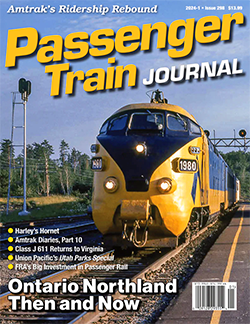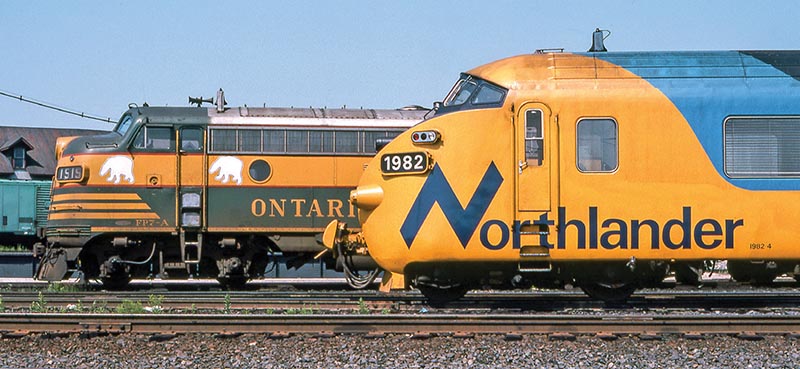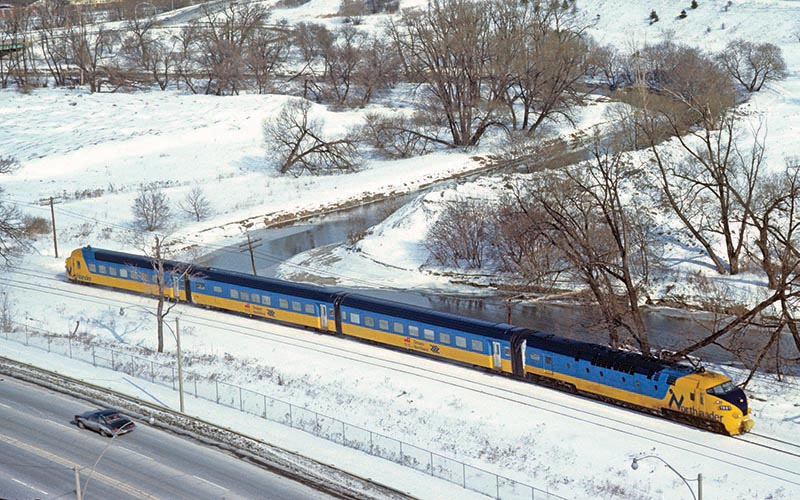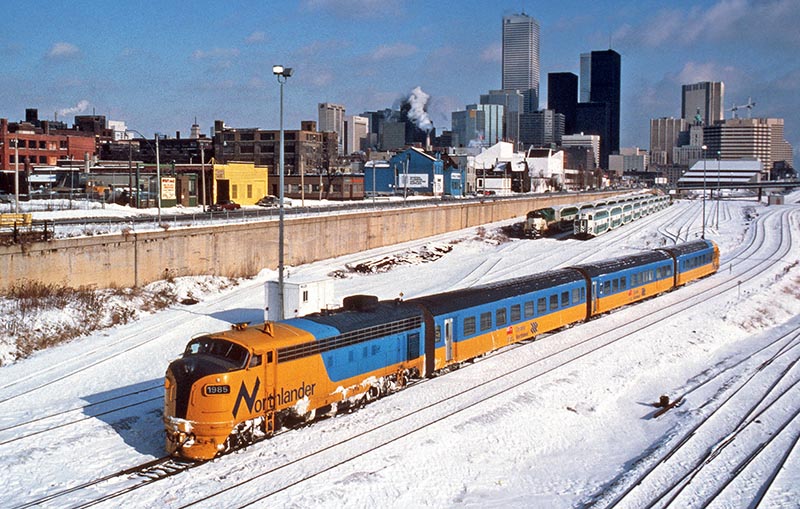 by Kevin J. Holland/photos as noted
by Kevin J. Holland/photos as noted
For more than a decade following its 1964 debut, the Polar Bear Express, a tourist-oriented daytime round-trip excursion service between Cochrane and Moosonee, Ont., was Ontario Northland’s best-known passenger train. Then, in early 1977, came word that Ontario Northland (ONR) had acquired four secondhand European trainsets with the aim of boosting ridership between Ontario’s “near north” region and the province’s capital, Toronto.
Heralded as the Northlander, the new service ran over Canadian National between Toronto Union Station and North Bay, Ont., with ONR handling the trains over its own rails north of there. The new Northlander’s daytime schedules complemented the overnight Northland, jointly operated by CN (VIA Rail Canada after March 1978) and ONR.
The Northlander trainsets were unlike anything previously seen on Canadian rails. Although their ONR careers were brief — not quite 15 years, and much less than that for their original locomotives — the service name survived until 2012, employing rebuilt GO Transit commuter cars that offered more consist flexibility than the stylish European cars.

ABOVE: Northlander cab car 1982 and ONR FP7A 1515 at North Bay in July 1978. Except on rare occasions, Northlander cab cars did not lead their trains in revenue service, stemming from concerns over collision safety in push mode. The operation of two Northlander trainsets coupled together was also a very rare occurrence. —Ken Goslett photo
The Northlander’s European origins
The four trainsets acquired for Northlander service had been built by a Swiss/Dutch partnership in 1957 for use on the Trans Europ Express (TEE) network of deluxe day trains. The bidirectional train-sets combined a Dutch diesel-electric locomotive, which also included space for checked baggage and Customs officers, and three passenger cars, built in Switzerland and all semi-permanently coupled. A total of 114 coach seats were available, divided between nine six-seat enclosed compartments and 60 seats in a comfortable 2+1 layout (with 42 in the cab car and 18 at the aft end of the diner). The dining car offered 32 chairs at eight tables, with meals prepared in a compact but fully equipped galley.
Cab-control cars made bidirectional operation possible, enabling quick turn-arounds at congested stub terminals. Five identical trainsets were built: two Swiss Federal Railways (SBB) type RAm, and three type DE4 for the Dutch state railway, Nederlandse Spoorwegen (NS). One of the Swiss trains was wrecked in Germany in 1971 and scrapped.

ABOVE: Northlander trainset 1981 heads south through the Don River valley on its last lap into Toronto Union Station on January 29, 1978. —Carl V. Ehrke photo; Kevin J. Holland collection
These trains’ distinctive cab contours were the work of a young Dutch industrial designer, Elsebeth van Blerkom, who took her inspiration from an egg form, made its ovoid contours angular, and added a segmented windshield remi-niscent of contemporary airliners such as the Vickers Viscount. The result was unique, and was used to good advantage to promote the trains on TEE posters and other advertising.
Riding on A1A trucks, the 1,980-hp lo-comotives were powered by twin 16-cylinder Werkspoor engines and Brown-Boveri electrical gear, with a separate 300-hp diesel engine providing head-end-power (HEP) for train lighting, galley service, and climate control…



